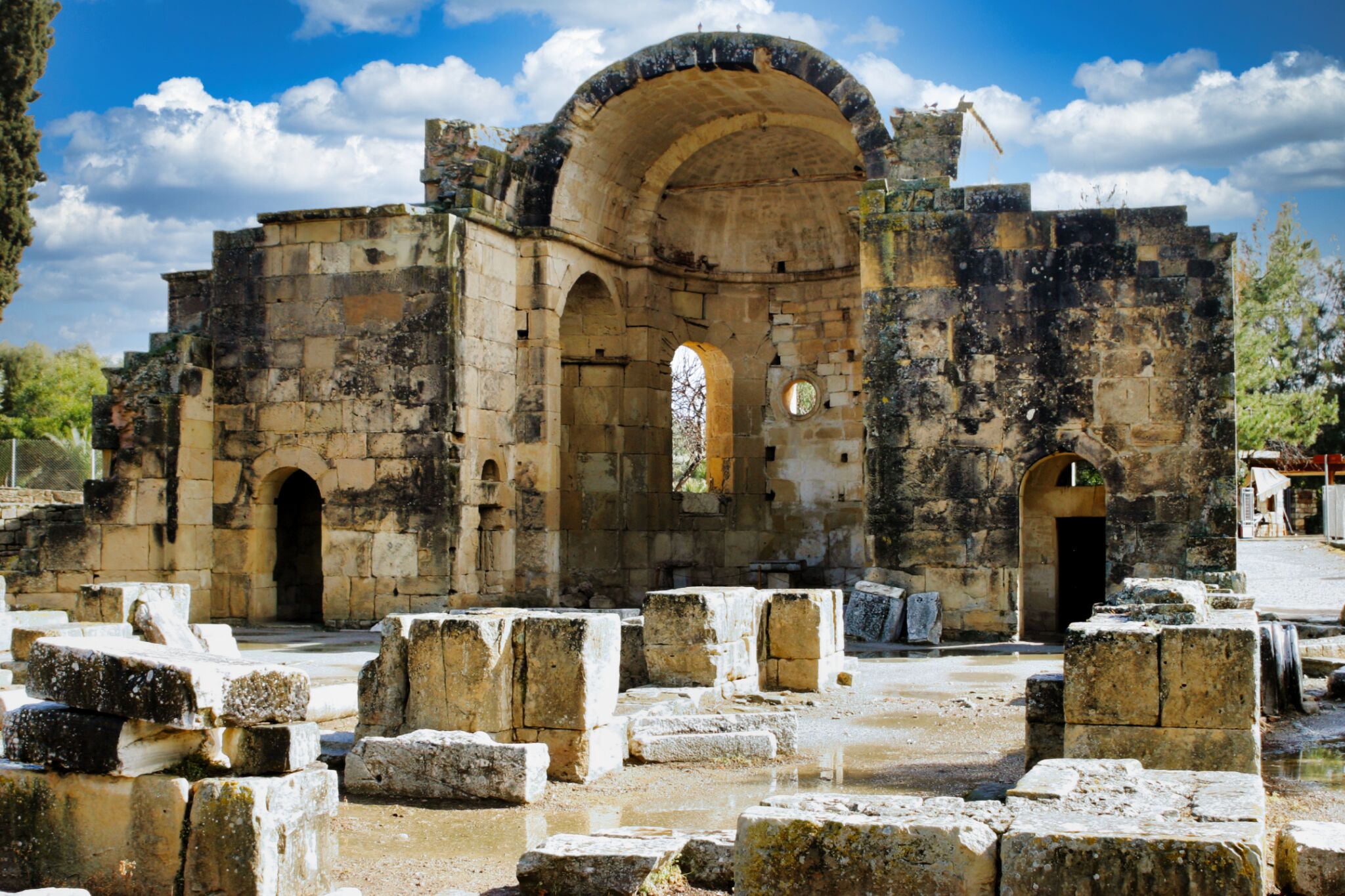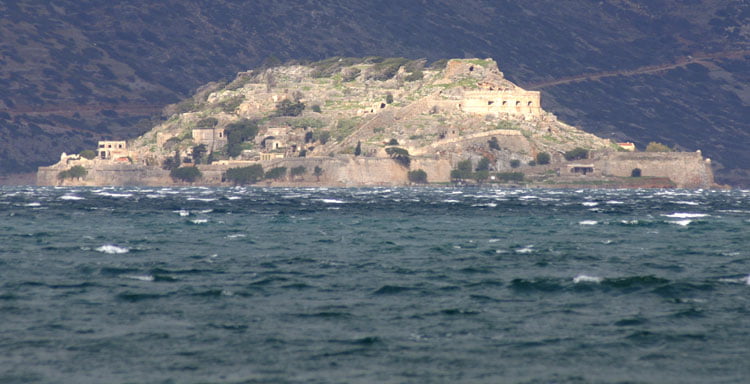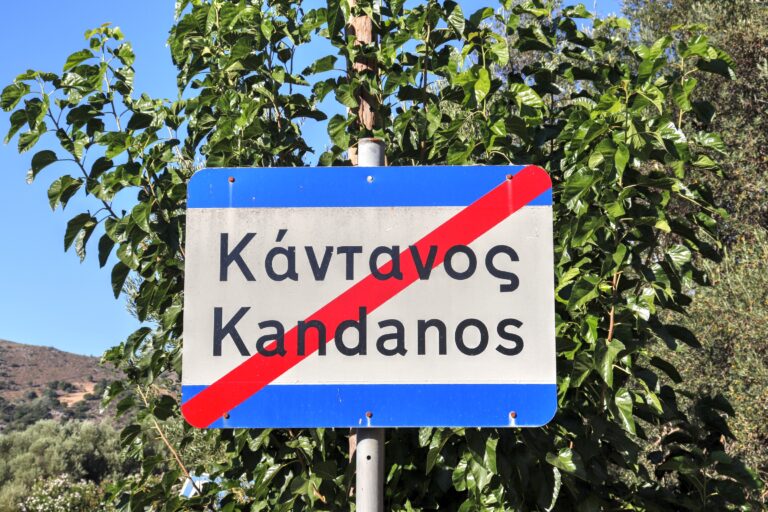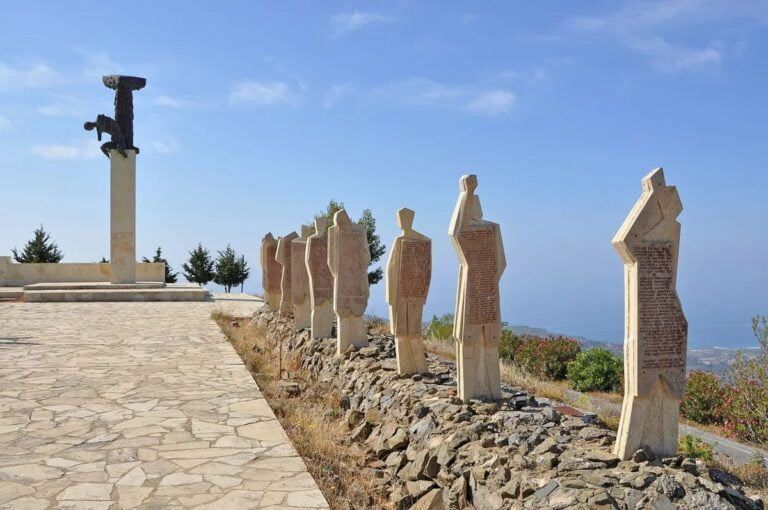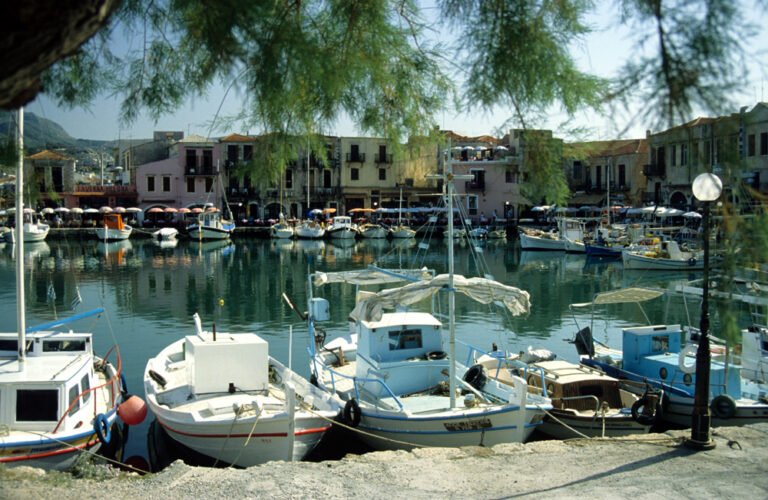The Apostle Paul, Saint Titus, and the Enduring Christian Legacy in Crete
Crete, a crucible of ancient civilizations, natural beauty, and spiritual depth, occupies a distinct place in the annals of Christian history. The island’s connection to the Apostle Paul and his disciple, Saint Titus, marks the dawn of Christianity on this island and weaves a narrative of faith, perseverance, and leadership that continues to resonate. This expanded exploration delves into the historical visit of Saint Paul to Crete, his influence on the island through Saint Titus, and the spiritual and cultural heritage encapsulated in the village of Agios Pavlos and the broader Cretan landscape.
The Apostle’s Journey and His Legacy
Saint Paul’s Voyage to Crete
The Apostle Paul’s mission to Crete, briefly mentioned in the New Testament, was a pivotal moment in the island’s religious history. After his release from the first Roman imprisonment around AD 62-63, Paul embarked on a journey that would bring him to Crete, accompanied by his faithful disciple, Titus. The Acts of the Apostles and the Epistle to Titus provide glimpses into this period, suggesting that Paul’s visit was instrumental in planting the seeds of Christianity on the island.
Historical and theological analyses suggest that Paul’s stay in Crete was marked by his missionary zeal, preaching the gospel and establishing Christian communities across the island. However, Paul’s time in Crete was not just about evangelisation; it was also about ensuring the sustainability of these fledgling communities in the face of heretical teachings and external pressures.
The Shipwreck: A Tale of Faith and Providence
One of the most dramatic episodes of Saint Paul’s journey to Crete is the shipwreck, a story of faith, survival, and divine providence. While the shipwreck, detailed in the Acts of the Apostles, occurred on the island of Malta, its theological and symbolic significance profoundly resonates with the Christian communities in Crete. The shipwreck represents Paul’s unwavering faith in God’s plan and his resilience in adversity—qualities he instilled in the early Cretan Christians.

Saint Titus: The Apostle’s Legacy in Human Form
Saint Titus stands as a towering figure in the Christianization of Crete, embodying Saint Paul’s legacy. Chosen by Paul to lead the Christian community in Crete, Titus faced the monumental task of organising the church, combating heretical influences, and nurturing the faith among the island’s diverse population. His role as the first Bishop of Crete, particularly his efforts in establishing the church’s structure and doctrine, laid the groundwork for a vibrant Christian tradition that thrives today.
Agios Pavlos: A Village Steeped in Apostolic Memory
Deep in the southern reaches of Crete, the village of Agios Pavlos (Saint Paul) stands as a living testament to the apostle’s enduring legacy on the island. While the village is a relatively recent establishment, the name and the surrounding area are steeped in the memory of Paul’s missionary journey and the Christian tradition he brought to Crete.
The Village and Its Spiritual Significance
Agios Pavlos is more than just a picturesque Cretan village; it symbolises the island’s deep-rooted Christian heritage. The village’s serene beauty, characterised by rugged landscapes and the azure expanse of the Libyan Sea, reflects the spiritual journey of Saint Paul and the trials and tribulations of the early Christian community in Crete. It is believed that the apostle, during his travels across the island, visited the area near Agios Pavlos, further endearing the location to those who seek to connect with the apostolic past.

The Churches and Monasteries of Agios Pavlos
The spiritual landscape of Agios Pavlos is dotted with churches and monasteries dedicated to Saint Paul, serving as beacons of faith and pilgrimage for believers. These sacred sites, ranging from ancient chapels to Byzantine monasteries, are not merely architectural wonders; they are repositories of religious art, history, and devotion that speak volumes about the Christian tradition in Crete.
The Church of Agios Pavlos in Sfakia: A Portal to the Byzantine Era
Nestled in the rugged terrain of Sfakia, near the remote village of Agia Roumeli on the southern coast of Crete, lies an architectural and spiritual gem that dates back to the Byzantine period: the Church of Agios Pavlos (Saint Paul). This tenth-century edifice, dedicated to the Apostle Paul, is not just a monument of religious significance; it’s a bridge to the early medieval era, offering insights into the Byzantine architectural style, spiritual practices, and artistic expressions of the time.
Historical Context and Architectural Significance
The Byzantine Empire and Crete
The Byzantine Empire, known for its rich cultural and religious heritage, left an indelible mark on Crete. The island’s strategic position in the Mediterranean made it a melting pot of cultures and a significant religious centre. During the middle Byzantine period, particularly in the tenth century, Crete experienced a resurgence in religious and artistic activity, partly in response to the stabilisation of the empire and the reconquest of Crete from Arab rule in 961 AD. The Church of Agios Pavlos was constructed within this context, embodying the era’s spiritual revival and Byzantine architectural renaissance.
Architectural Features: A Testament to Byzantine Genius
The Church of Agios Pavlos is a quintessential example of Byzantine architecture, characterised by its cruciform shape. This cross-in-square design was prevalent in Byzantine church architecture, symbolising the Christian faith and reflecting the sophistication of Byzantine construction techniques. The church’s layout, with a dome supported by four columns at the centre of the cross, allows for a centralised plan that facilitates congregational worship while symbolising the heavens.
The use of local stone, mainly from the beach, in the construction speaks to the adaptability and resourcefulness of Byzantine builders, who were adept at incorporating the natural environment into their architectural designs. The church’s modest size belies its significance, serving as a focal point for the local Christian community and a beacon of the Orthodox faith in the region.
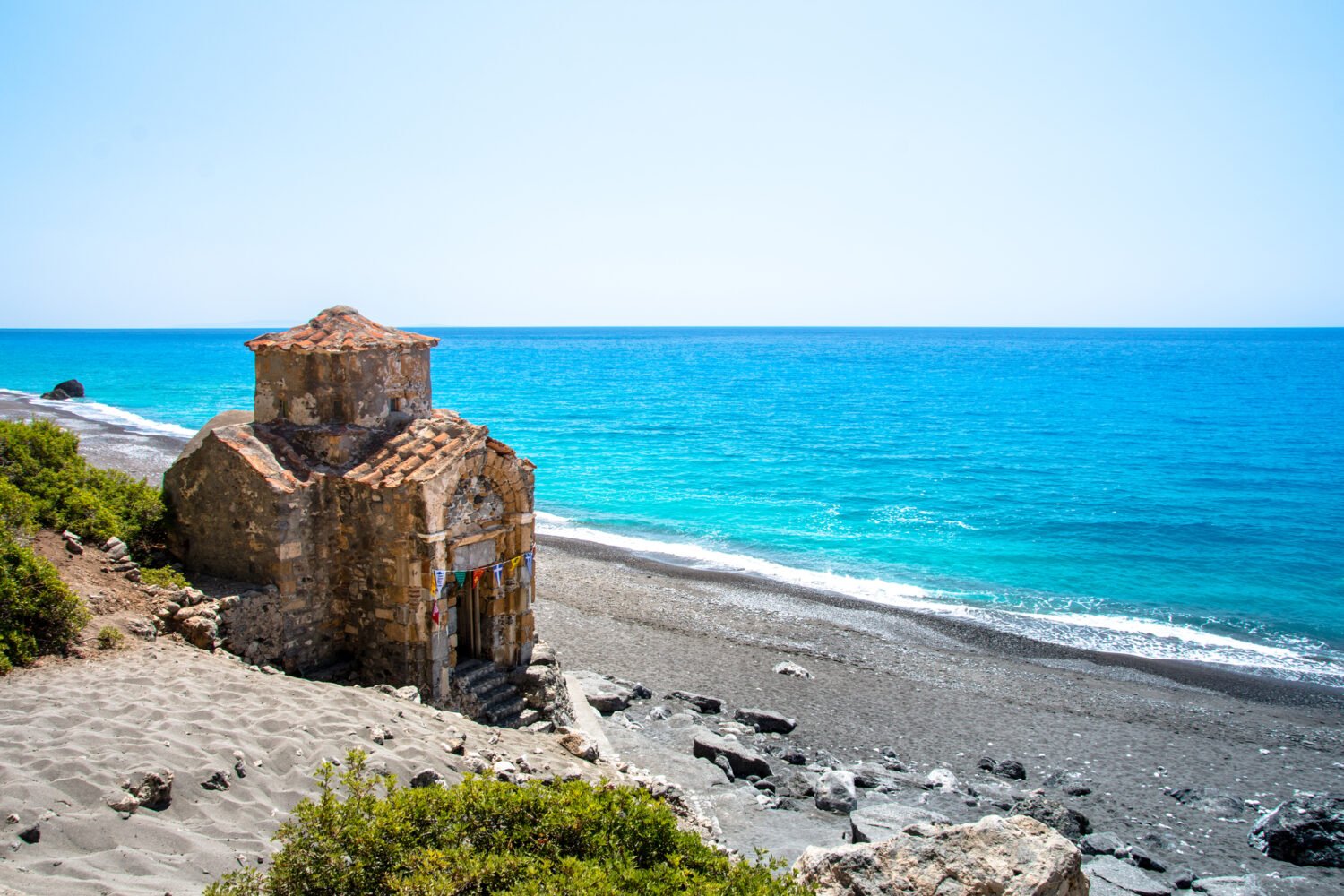
Artistic Expressions: Frescoes and Iconography
One of the most striking features of the Church of Agios Pavlos is its interior decoration, particularly the frescoes that adorn its walls. These religious paintings are vital to understanding Byzantine spirituality and art. Although many have faded over time, the remaining frescoes provide a glimpse into the theological and artistic milieu of the tenth century.
The Frescoes: A Window to the Byzantine Soul
The frescoes in the Church of Agios Pavlos symbolise the Byzantine approach to religious art, which sought to convey spiritual truths and biblical narratives through iconography. These images served not only as decoration but also as a medium for theological education, illustrating scenes from the lives of Christ, the Virgin Mary, and various saints, including Saint Paul.
The frescoes depict Saint Paul in a particularly noteworthy way. Often shown in a posture of teaching or writing, these images reflect his role as a missionary, theologian, and foundational figure in the Christian tradition. The artistry of the frescoes, with their vivid colours and symbolic motifs, demonstrates the skill of Byzantine artists in conveying complex spiritual concepts through visual means.
The Church Today: A Living Legacy
Despite the passage of over a millennium, the Church of Agios Pavlos continues to be a place of worship and pilgrimage. Its remote location, near the ancient city of Tarra and the end of the Samaria Gorge, adds to its mystical allure, drawing visitors who seek to experience this sacred site’s tranquillity and spiritual depth.
Preservation and Challenges
Preserving the Church of Agios Pavlos poses significant challenges, given its age, remote location, and centuries of natural wear and tear. Efforts to maintain and restore the church are ongoing, involving local authorities, the Greek Orthodox Church, and heritage organisations. These efforts aim to preserve the physical structure and ensure that the church remains a vibrant centre of spiritual life and a testament to Byzantine heritage.
The Monastery of Agios Pavlos near Hersonissos
Further exemplifying Saint Paul’s spiritual heritage in Crete is the Monastery of Agios Pavlos, located near Hersonissos. This monastery is believed to have been found on or near a site visited by Saint Paul and is renowned for its historical significance and spiritual ambience. The presence of a cave thought to have provided refuge and solace to the apostle adds a layer of mystical allure to the monastery, making it a destination for contemplation and pilgrimage.
Apostle Paul’s Enduring Influence on Cretan Christianity
The legacy of Saint Paul and his disciple Saint Titus in Crete transcends the historical and enters the realm of the spiritual and cultural. Through their missionary work, leadership, and teachings, they established a foundation of faith that has endured through millennia, influencing the religious landscape and Crete’s cultural and societal ethos.
The Christian community in Crete, with its rich traditions, rituals, and artistic expressions, stands as a testament to the enduring impact of Saint Paul’s mission. The churches and monasteries dedicated to Saint Paul and Saint Titus are not mere historical relics; they are vibrant centers of worship, learning, and cultural preservation, embodying the apostolic zeal and the depth of faith that characterize the Christian heritage of Crete.

Conclusion: A Legacy Etched in the Heart of Crete
The story of Saint Paul, Saint Titus, and the Christian legacy in Crete is a narrative of faith, resilience, and spiritual leadership. From the apostolic missions to the establishment of churches and monasteries, the Christian tradition in Crete is a vivid tapestry of history, spirituality, and culture. The village of Agios Pavlos, along with the sacred sites dedicated to these early Christian figures, stands as a testament to the profound impact of their teachings and the enduring strength of the Christian faith on the island.
As we explore the legacy of Saint Paul and Saint Titus in Crete, we are reminded of the power of faith to transform landscapes, cultures, and hearts. Crete’s Christian heritage, rooted in the apostolic past and flourishing in the present, continues to inspire and guide, serving as a beacon of hope, unity, and spiritual continuity in the Mediterranean and beyond.
Table of Contents
Views: 309

